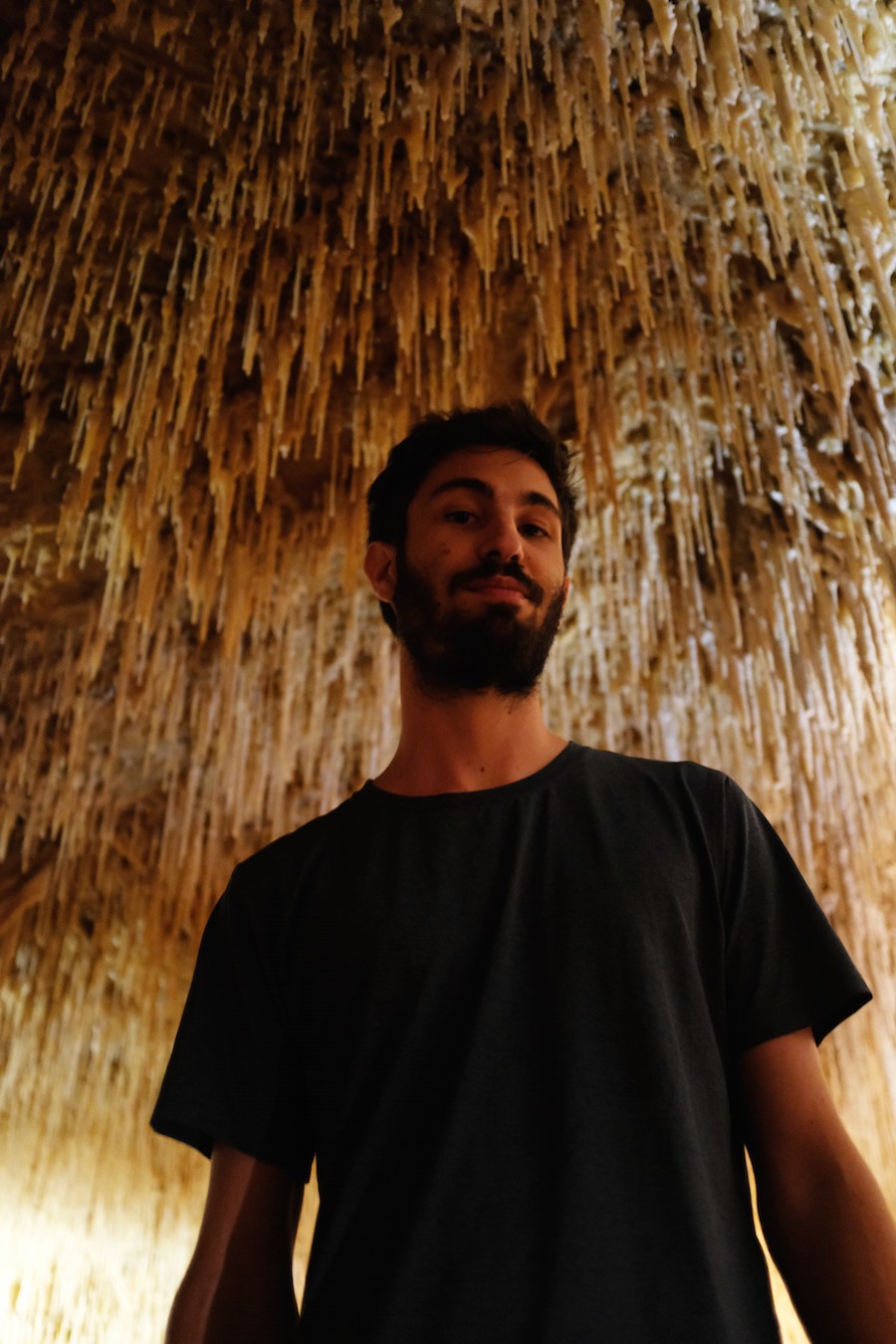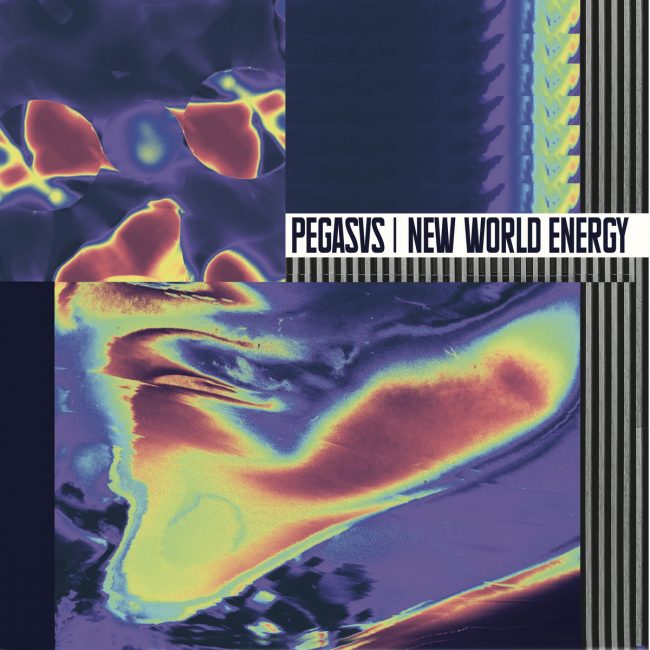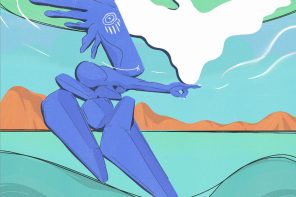
We’re beyond excited to present you with our guest mix today from an artist that we hold in high esteem in the eclectic Hugo LX.Trying to associate Hugo LX to a specific genre or category would be neglecting the rich spectrum of sounds and aesthetics he invited his audience to delve into. For him, music is an experience lived through all of our senses. His background as a former architect enriched his understanding of how music can be experienced and how it flows in different kind of spaces and environments.
Hugo LX boasts an impressive discography that includes releases on Balance Recordings, Mona Musique and MCDE recordings. His 2015 album “Akegata” is a reminder of his production beginnings and that his passion for beat making and atmospheric exploration remains. There’s no denying that Hugo LX is one that is pushing the boundaries of how we understand and experience music and is a household name in the electronic music industry.
[soundcloud url=”https://soundcloud.com/boltingbits/mixed-by-hugo-lx” /]
In addition to treating us with a wide-ranging atmospheric mix, Hugo kindly accepted to answer a few questions and offer some insight as to how he approaches his creative process, what influences him and what comes next in his path.
INTERVIEW

You started as a beatmaker at a young age. How did you get to start producing house tracks?
Genres was less a thing than style to me. Still to this day. Back in the late 90s, early 2000s, broken beat was bridging the gap between uptempo club music and downtempo hiphop so well Most of my favorite radio show would play both styles. Think of IG Culture, Dego, Kaido, even Madlib. It was a huge inspiration and I just followed that path. I still have many bruk or house demos that i did on pause tapes or, later, on the EPS 16+ sampler – my first gear ever. However, what caught the attention to my mentors was my hiphop beats, they were probably simpler, and it was a template to make me progress.
Your itinerary and evolution as an artist is out of the ordinary, with you having travelled the world and even relocated to Kyoto, Japan for a period of time.
There’s a little misconception that i could clear here. I hadn’t travelled that much before being a young man, although i already had the privilege to see a few of the countries where my favorite music came from, the UK and the United States. I was more of a countryside boy with city leisures, thus, i spent the bigger chunk of my teenage years in my room trying to craft music. It was a good way to escape other difficulties i had at that time.
What attracted you to the country of the rising sun and what led you to be interested to Japan and its culture?
It was sort of a happy accident. Having a part of my family located in Sweden and China, i tried to study abroad in those two places, in order to finally connect a bit with them. (Un)fortunately, i’ve been rejected for both applications – snubbed by “highly intellectual” university teachers.. Anyway, next thing you know, i found out there was a vacant seat at the Kyoto University of Technology, and i happened to move there for a little moment. It coincided with the release of a hiphop album i had fully produced, what allowed me to connect with staples from the scene, and ialso made a couple of good friends in the process.
How did you experience your initial contact with Japanese culture? How did the Nippon culture influence your growth as an artist?
Japan helped me on a couple of aspects: getting more creative freedom. Nothing is that impossible, probably. And how to rethink my creative process: working with the minimum for instance, or re-using old parts. Changing the purpose of tools, of stems, their role. Some parts become poetic, other went to become systems. Things then took another turn: instead of waiting for inspiration, i would get inspired by craftsmen. Just wake and bake, something good will probably lie amongst the piles of music you create.
You’re also a graduate from architect school. How did find a balance ( or symbiosis) between your interest for that field of expertise and your passion for music?
I see it all as the same. It’s a matter of vibrations and space. We hear with our skin first. The same way we apprehend a space. It’s all a feeling before anything. We tend to lose that both in music and architecture. Technology, trends, it all push us not to feel. You can design something generous out of a screen. It has to be initiated in another place. Mind is that holy place.
Your sound is mature and rich with jazz, funk, and hip hop influences. Not only that but you’ve managed to fuse the aesthetics of these sounds with the essence of house music and create floor proper digs and complex deep house explorations. How did you come to be in contact with jazz, hip hop and funk? What were your main influences that you believe really impacted how you listen to music and how you approach the creative process of music production?
I barely listen to music these days. Hardly search for it. I like to discover music in a moment. An article, a recommendation, a tune on the radio. I might hear music in a painting, or in a daily episode. I find my inspiration in energy. As a matter of fact, a comfortable dance floor really is a thing. As for Hiphop, it was just the environment. Quality hiphop, albeit already mainstream at that time, was everywhere to be found, TV & Radio, although the reception was not as wide as now. I just loved the energy and beat culture so much. Then got a chance to meet some artists easily, while looking for records. I had a good knowledge of Jazz, deep funk, MPB or English prog rock, that helped a bit.
What directs your thought process when you’re producing a dancefloor dig in contrast to producing an explorative or atmospheric track?
Your sound is reminiscing of a golden age of house music when legendary artists like Kerri Chandler, Jovonn, Chez Damier, Ron Trent and others use to rule over the domain. Do you believe their sound is now frozen in time and be part of electronic music history house music and be used in sets or can it inspire a new generation of artists to replicate its aesthetics while exploring what modern production gear can add to it?
You named the masters. Their music, although it has marked an era, is timeless on so many levels. The quality and intensity of production, the emotions it captures.
These songs have also been designed and shaped with tools that possessed a full electro magnetic intensity. And these musicians conveyed a full part of their collective and personal history through music – these tools amplified it.
It would be pretentious, and wrong, to think any of us here can ever replicate any bit of that.
That said, it’s great if a few can extend the legacy.
Do you feel like you, along with certain other artists, are an heir of that era ?
I guess we have parts of this legacy in our hands. We should take care of it, take it to a good place. While some sides of the club music business worry me – and it surely got far from its roots – we also have to acknowledge all the good music that is released those days. Many of the pioneers continue to innovate, and to mentor the new generation. Look at the number of talents Theo Parrish or Kai Alce brought to light, DJs and/or producers, It’s amazing. When i listen to the craft of, say, Stefan Ringer, Kyle Hall, or Byron… they carry this torch.
Are there any current artists from all genres that pique your interest and impact your work? Any artists that collaborating with them brings a lot of added value to your work?
I’m extremely inspired by music that’s spontaneous. As for electronic, dance, if i had to give 3 names.. I would probably say Marcellus Pittman, Kuniyuki Takahashi, Linkwood too. Some music that is rich in texture, simple and essential at the same time. I really enjoy the craft of Hanna too. Those dreamy pads, instantly recognizable. And i can’t forget Waajeed, who is bringing something new and fresh.
I also took a lot of inspiration from many other fields, the works of Debussy, the last album of Eiko Ishibashi, the electromagnetic sculptures of Takis, impressionistic painting, photography, poetry. I always try to get infos about each artist process. In that regard, collaboration expanded my spectrum too. Working on music with DJ Spinna… it just took me to the next plateau. We have different way to craft a song, and I guess our approaches complimented each other very well – He has that spontaneity, yet an immense sense of detail, and all this knowledge of music, i’m learning from him every time, cherishing every minute we spend together making music or talking about it.
What is your favorite piece of equipment in the studio? While playing in front of a crowd?
My trusty SP1200. traded my first sampler for it (what a bargain right???) aside of that, an old ensoniq keyboard and a pair of Technics, i never really had much equipment. Still waiting for my first pair of speakers.
You seem to use social media in an efficient “to the point” way. Do you believe it has become necessary to have a constant presence on social media in order to stay relevant? What is your approach towards the use of social media?
I’m just tired of it a bit. It could be a good platform to share more than gig dates and new records, maybe to expand the artistic spectrum of musicians. But the result is a ton of ego tripping and ugly random photos. So… i might keep my time and energy for music, and hire a real PR maybe?
What’s next for Hugo LX ?
Lots of new music. Patiently completing my album, i also have 2 EPs ready. Lots of remixes.
Some stuff in Japan, again. Music for images, video content.
I also want to make my touring schedule a bit more intelligent, thinking about it now…
Let’s see!
Shout outs?
Yes. i wanna thank Hermon Mehari for helping me lots lately. If you don’t know his music, he’s an incredible artist from Kansas City, a tremendous trumpet player, and a great friend of mine.
And respect to Seiji Ono, Theo Terev, DJ Spinna, Kai Alce, The AP’s, Telly Onishi, Satoshi Tomiie, Mido from Menace, Laura and the homie Meftah!
Interview by Jon.



